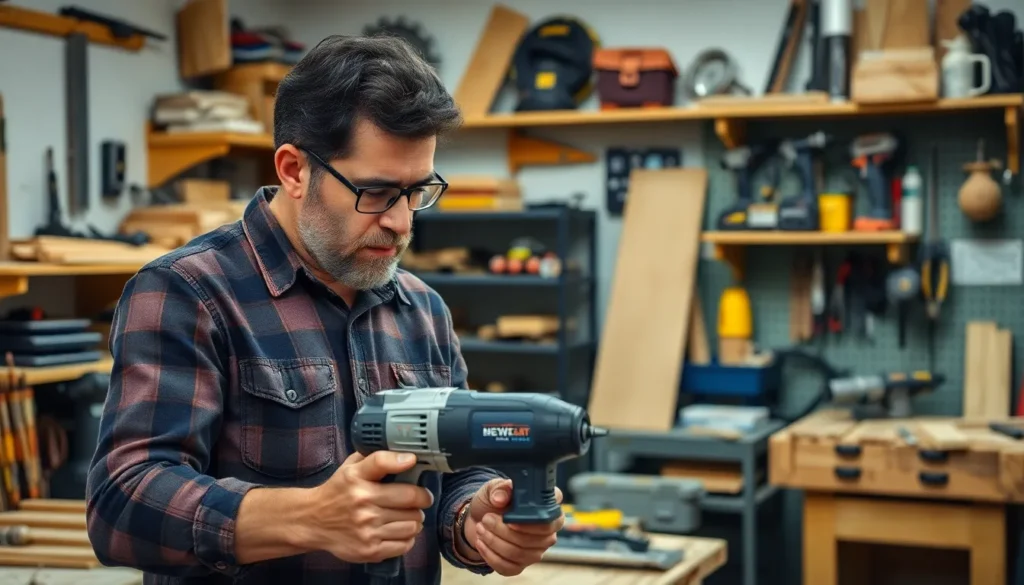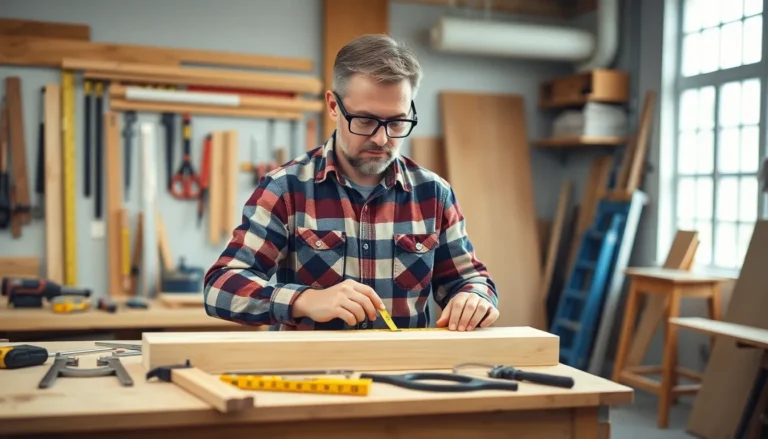Table of Contents
ToggleEvery DIY enthusiast and professional tradesperson knows the thrill of discovering the perfect tool. A well-curated tool wishlist can transform projects from mundane to extraordinary, making tasks easier and more enjoyable. Whether it’s a high-tech gadget or a classic hand tool, having a clear vision of desired tools helps prioritize purchases and enhances efficiency.
Creating a tool wishlist isn’t just about buying the latest gadgets; it’s about investing in quality and functionality that truly meets one’s needs. From power tools that cut down on time to specialized equipment that tackles unique challenges, the right tools can elevate any project. This article explores the importance of a tool wishlist and offers tips on how to build one that aligns with personal or professional goals.
Understanding Tool Wishlist
A tool wishlist serves as a strategic plan for acquiring essential and desired tools. It empowers individuals to focus on what truly matters, ensuring a balance between functionality and quality. A well-structured wishlist enables users to prioritize projects, assess needs, and make informed purchases.
Benefits of a Tool Wishlist
- Enhances Planning: A tool wishlist aids in organizing tasks and projects, preventing overspending on unnecessary items.
- Improves Quality: Focusing on high-quality tools ensures longevity and performance, reducing future replacement costs.
- Supports Research: Creating a wishlist encourages users to investigate tools, leading to informed decisions that align with specific requirements.
Creating an Effective Tool Wishlist
- Identify Needs: Determine which tools are essential for upcoming projects or repairs.
- Research Options: Investigate various brands and models, paying attention to reviews and ratings.
- Set a Budget: Establish a budget that reflects realistic spending limits while prioritizing critical tools.
Maintaining the Wishlist
Regularly revisiting the wishlist ensures it remains relevant. Tools may become outdated or new tools may arise that meet evolving needs. Regular updates keep the wishlist aligned with current project objectives and industry trends.
Benefits of Creating a Tool Wishlist

Creating a tool wishlist offers multiple advantages for both DIY enthusiasts and professional tradespeople. It streamlines the purchasing process and focuses efforts on acquiring tools that truly enhance productivity.
Organizing Your Needs
Organizing needs helps individuals clearly identify which tools are essential for current and future projects. Individuals can categorize tools based on specific tasks—such as woodworking, plumbing, or electrical work—ensuring that priorities align with project requirements. Structured organization leads to better planning and reduces the potential for impulse buys. A well-organized wishlist acts as a reference point, allowing for easy updates as project demands change.
Prioritizing Purchases
Prioritizing purchases motivates individuals to invest in high-quality tools first. Owners can assess which tools impact productivity the most and address those needs promptly. Prioritization prevents budget overruns by focusing spending on key items instead of being sidetracked by less critical gadgets. Establishing a hierarchy within the wishlist fosters a disciplined approach to purchasing, enabling individuals to fulfill their immediate requirements while planning for future expansions.
Essential Tools to Consider
A well-curated tool wishlist significantly enhances project efficiency and effectiveness. Below are categories of essential tools to consider for both DIY projects and professional tasks.
Hand Tools
Hand tools provide the foundation for many projects. Consider including the following items:
- Hammers: Essential for driving nails and shaping materials, a claw hammer is versatile for most projects.
- Screwdrivers: Flathead and Phillips screwdrivers are crucial for assembly and disassembly tasks.
- Pliers: Needle-nose and slip-joint pliers assist with gripping and twisting wires or small fasteners.
- Measuring Tape: A 25-foot measuring tape is ideal for accurate measurements on various job sites.
- Utility Knife: A sharp utility knife serves multiple purposes, from cutting through boxes to trimming materials.
Power Tools
Power tools streamline work processes and improve outcomes. Key options include:
- Drills: A cordless drill can handle tasks ranging from drilling holes to driving screws.
- Saw: A circular saw is effective for making straight cuts in wood, while a jigsaw handles curved cuts.
- Sander: An orbital sander provides a smooth finish on surfaces, fitting various sanding needs.
- Router: A router shapes edges and creates grooves, enhancing finishing touches on woodworking projects.
- Impact Wrench: An impact wrench significantly reduces the effort needed to tighten or loosen nuts and bolts.
Safety Equipment
Safety equipment is vital for protecting individuals during projects. Include the following items:
- Safety Goggles: Protect eyes from flying debris and hazardous materials.
- Ear Protection: Use earplugs or earmuffs to safeguard against loud tool noise.
- Dust Mask: A dust mask minimizes inhalation of particles while sanding or sawing.
- Gloves: Durable gloves safeguard hands against cuts and abrasions while handling materials.
- Hard Hat: A hard hat protects the head from falling objects, especially in construction zones.
These essential tools enhance overall project effectiveness, ensuring preparedness for a variety of tasks and improving safety.
Tips for Building Your Tool Wishlist
Creating a tool wishlist requires careful thought and planning. Focus on identifying needs clearly to build a list that enhances project efficiency and meets individual objectives.
Researching Tools
Researching tools involves evaluating options based on functionality, durability, and user reviews. Identify reputable brands recognized for quality and innovation. Check online resources like manufacturer websites, industry forums, and expert reviews to gather insights. Compare specifications with similar tools to understand differences and advantages. Attend trade shows or local demos to experience products firsthand. Engage with fellow enthusiasts and professionals to gain recommendations or warnings about specific tools. Take advantage of tools like comparison charts, which summarize key features and prices for easier decision-making.
Setting a Budget
Setting a budget ensures that purchasing aligns with financial limitations. Begin by determining a total budget based on both short-term and long-term needs. Allocate funds for essential items versus optional tools. Prioritize high-quality tools as they often provide better performance and longevity, which proves cost-effective over time. Use a spreadsheet to track potential purchases and associated costs, comparing prices across retailers to identify the best deals. Consider using sales seasons, such as Black Friday or seasonal promotions, to maximize purchasing power. Regularly review and adjust the budget as project needs or priorities change.
A well-structured tool wishlist is an invaluable asset for anyone engaged in DIY projects or professional trades. It not only streamlines the purchasing process but also ensures that individuals invest in tools that truly enhance their work. By prioritizing quality and functionality over trends, users can make informed decisions that align with their specific needs.
Regularly updating the wishlist keeps it relevant and effective. This proactive approach allows for better planning and resource management. Ultimately, a thoughtfully curated tool wishlist empowers individuals to focus on what matters most in their projects, leading to greater satisfaction and success in their endeavors.




